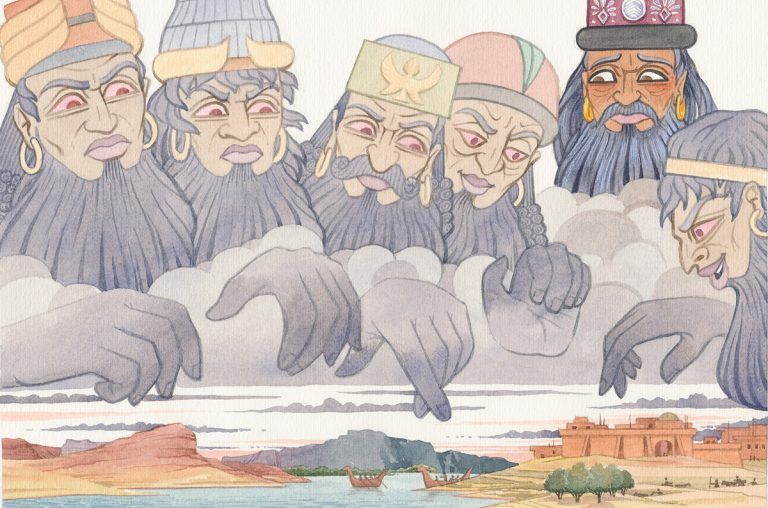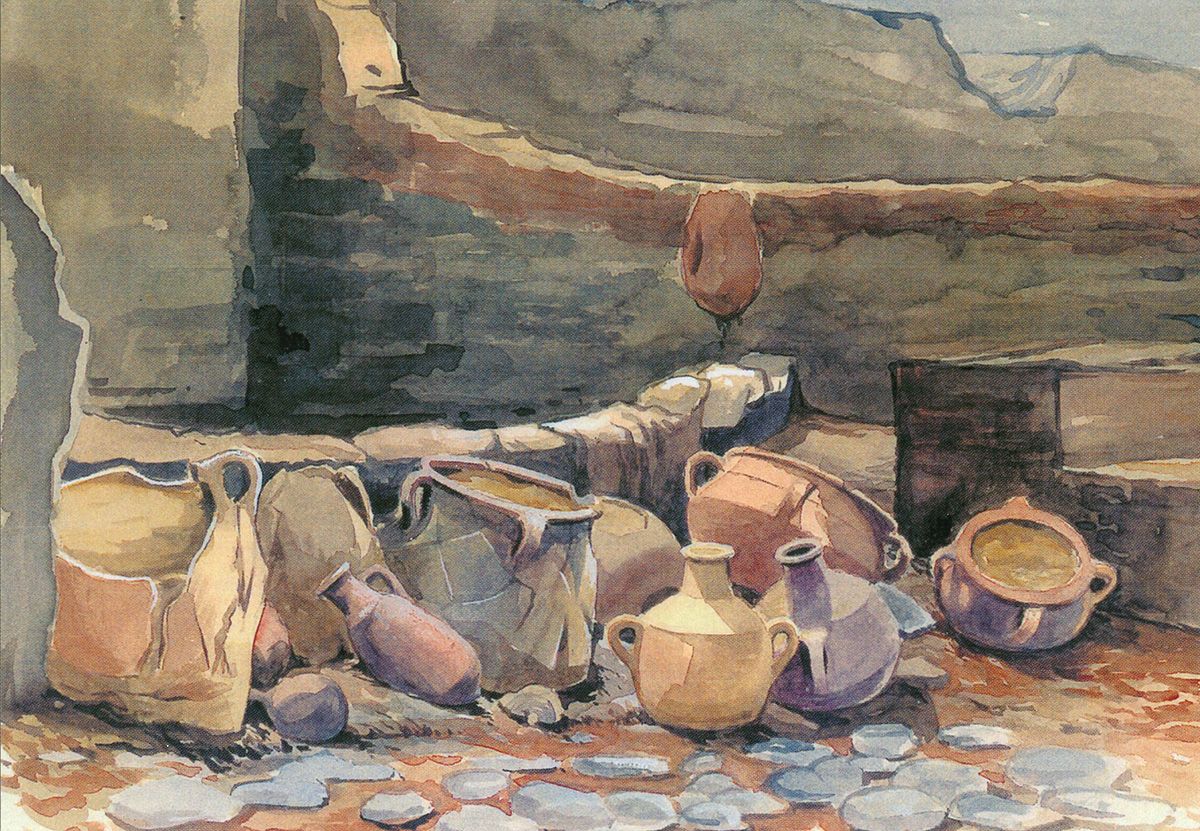Small exhibition
On display until the end of May 2024
Drawings and paintings inspired by the archaeology of the Ancient Near East
In this small exhibition you will see a selection of twenty-one works by the Dutch painter, illustrator and artist Hugo de Reede (1929-2019). Inspired by antiquity and associated with the Leiden excavations in Jordan in particular, De Reede left his mark on 25 years of archaeological research.
- This small exhibition is on display behind the Egyptian temple in our freely accessible entrance hall.
Archaeological draughtsman
After studying Visual Arts in The Hague, Hugo started out as an illustrator of children’s books, and sat on the editorial board of the children’s magazine Kris Kras. He soon made his mark in the advertising world, however, which led him to establish his own agency. When he turned 50, he changed course and went back to painting. At that time he also became fascinated by archaeology, and in 1979 he joined his first Leiden University excavation as an archaeological draughtsman. Until 2004 he was a regular member of the excavation team, particularly in Jordan. He worked at Yadudeh, Tell Deir’Alla, Tell Hammeh and at Khirbet Balama (West Bank).
From watercolours to comic strips
A prolific artist, Hugo left behind a large number of drawings and paintings, ranging from landscapes and still lifes to fairy tales and stories with often witty details. Archaeology was a major influence on his work. In addition to drawing archaeological and historical reconstructions and excavation sites, he captured the legend of the Mesopotamian hero Gilgamesh in impressive style. He also drew an unfinished comic strip about the downfall of Deir’Alla. As such, he was one of the most important archaeological artists in the Netherlands.
This exhibition was curated by Gerrit van der Kooij, archaeologist and Marie-Louise Dumas, partner of Hugo de Reede.

Fragment from the graphic novel 'Gilgamesh' (1999)

Painting of the excavation at Tell Deir'Alla (1984)